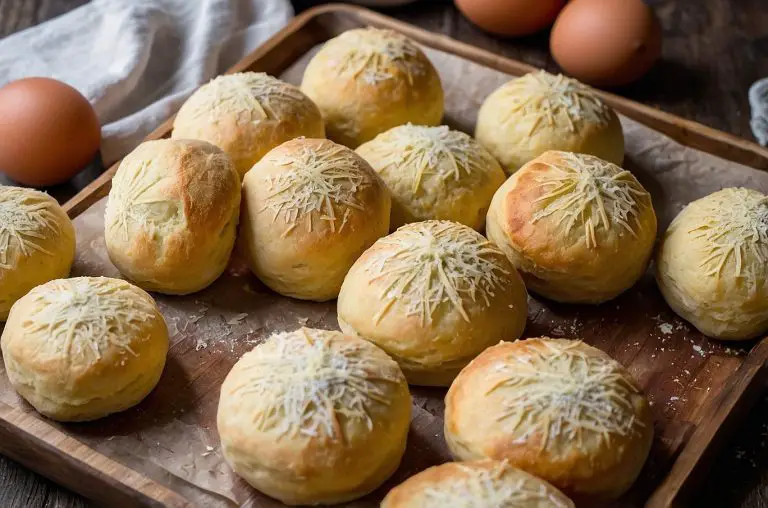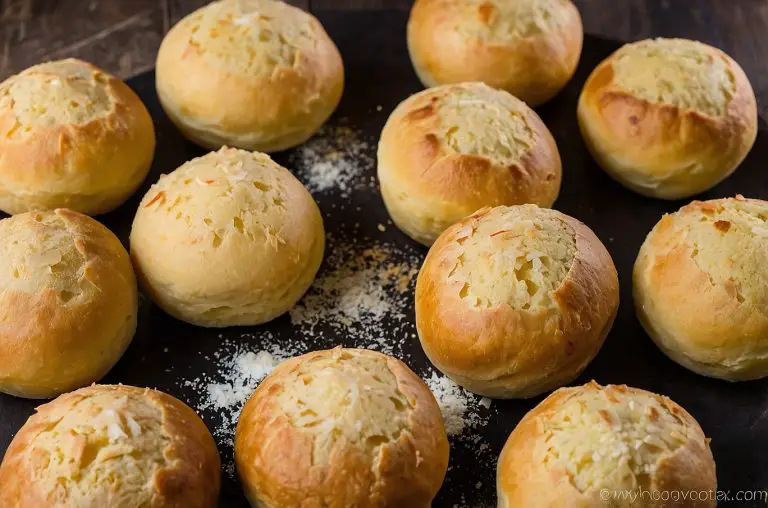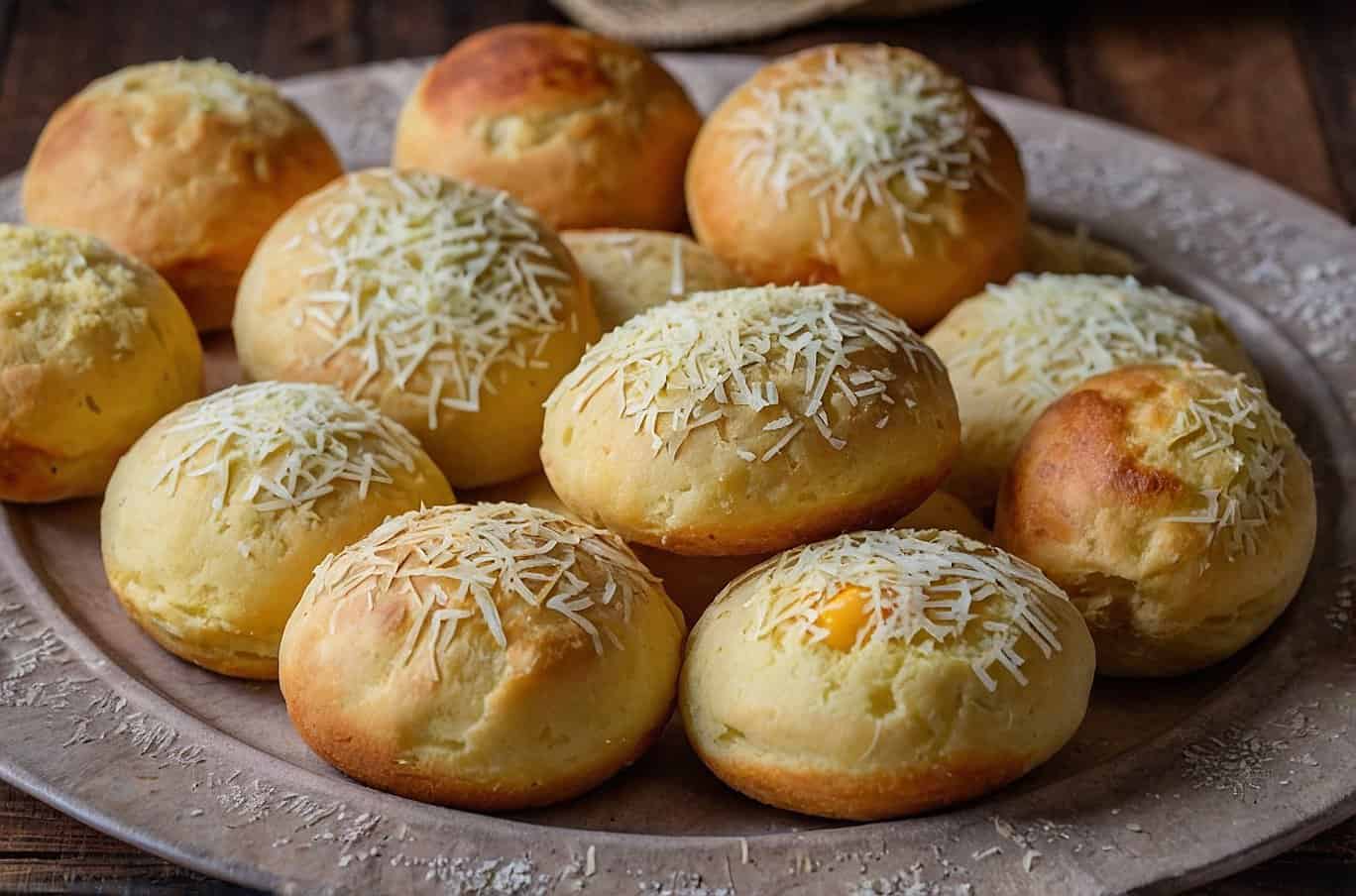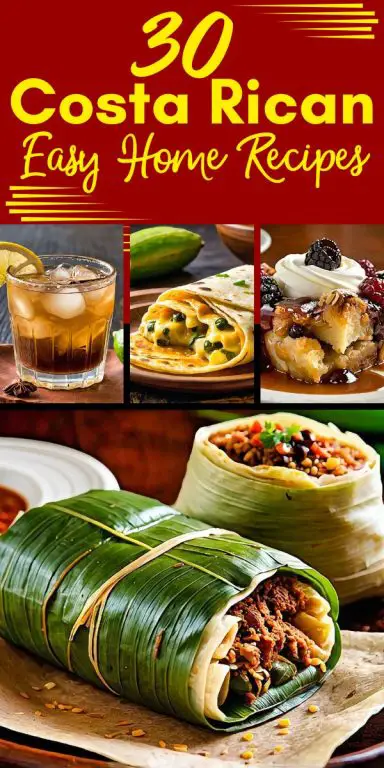The Costa Rican Pan de Yuca recipe was among the highlights of my visit to Alajuela, Costa Rica . I met a small restaurant owner who took time to show me how to make this traditional dish. Pan de Yuca (Yuca bread) is a gluten free treat made with Yuca flour, cheese and eggs. It is consumed as a snack or as a complement to dishes all over Costa Rica.
The basic recipe for Costa Rican Pan de Yuca called for finely ground Yuca flour, grated cheese and eggs rolled into a dough. The restaurant owner showed how to form the dough into small round pieces and bake them until golden brown. The procedure was simple and quick to replicate at home.
I experimented with the bread the very first time and found it somewhat crispy on the outside and chewy and soft inside. The cheese gave the Yuca a mild, savory flavor that offset the nuttiness of the Yuca. The light texture made the bread a fantastic side dish but it is also a popular snack on its own. Locals love the Costa Rican Pan de Yuca recipe and it is found in bakeries and small eateries all over Alajuela.
Alajuela is a laid back city in Costa Rica’s Central Valley, near major attractions. Small shops, local markets and restaurants with traditional dishes line the streets of the town. A visit to the Central Park of Alajuela shows glimpses of everyday life, with locals gathered under large trees. A nearby landmark is the Alajuela Cathedral because of its white fa’ade and red dome.
For individuals visiting the area, Alajuela is the gateway to Po’s Volcano National Park, which is just down the road. The park includes an active volcano with a large crater and hiking trails. Also on the Doka Estate coffee Plantation, there are guided tours of the Coffee production process, which is typical of Costa Rican culture.
Learning the recipe for Costa Rican Pan de Yuca added another dimension to my visit: linking me to the local food culture. The recipe’s simplicity and popularity make it a staple in Costa Rican cuisine.

Ingredients For the Costa Rican Pan de Yuca Recipe
Yuca Flour
Grated Mozzarella Cheese
Grated Parmesan Cheese
Vegetable Oil
Milk
Egg
Baking Powder
Salt
Cooking Instructions For the Costa Rican Pan de Yuca Recipe
In a large mixing bowl, combine the Yuca flour, mozzarella cheese, parmesan cheese, baking powder, and salt. Mix well.
In a separate mixing bowl, beat the egg and mix in the vegetable oil and milk. Slowly pour the wet mixture into the dry mixture, stirring until a dough forms.
Preheat the oven to 375°F.
Divide the dough into 8 equal portions and roll each portion into a ball. Place the balls onto a baking sheet lined with parchment paper. Bake the pan de Yuca for 20-25 minutes or until golden brown on the outside and cooked through on the inside.
Serve the pan de Yuca warm.
10 Most Popular Spices Used in Costa Rica
Costa Rican cuisine is fresh and vibrant, using local spices and herbs. These spices give the ingredients an all natural taste and create a special cooking experience. The following are the 10 most common spices in Costa Rica that give the food its own character.
1. strong>Coriander Coriander, known as cilantro in Costa Rica, is one of the most widely used herbs in the country. It is found in many dishes, from rice and beans to soups and salsas. The fresh, citrusy flavor of coriander brightens up many Costa Rican meals, and it is often used as a garnish to finish off dishes like gallo pinto or sopa negra.
2. Garlic Garlic is an essential ingredient in Costa Rican cooking, commonly used to add depth and richness to many dishes. It is often sautéed at the beginning of cooking to form the base of stews, rice dishes, and soups. Garlic also pairs well with other spices and adds a subtle, aromatic flavor to the food.
3. Onions Onions are another key ingredient in Costa Rican cuisine. They provide a sweet, savory base for many dishes and are frequently used alongside garlic in cooking. Whether they are caramelized, sautéed, or raw, onions are an indispensable component in soups, stews, and rice-based dishes like gallo pinto.
4. strong> Oregano Oregano is commonly used in Costa Rican cooking, adding a warm, aromatic flavor to meats, stews, and tomato-based sauces. It is especially popular in dishes like sopa de pollo (chicken soup) and is also used in marinades for grilled meats. Oregano brings an earthy and slightly peppery flavor to many traditional Costa Rican meals.
5. Cumin Cumin is a spice that adds a warm, earthy, and slightly nutty flavor to Costa Rican dishes. It is often used in rice and bean dishes like gallo pinto, as well as in marinades for meats and stews. Cumin is a key ingredient in many Costa Rican spice blends, contributing to the distinct taste of the country’s food.
6. Turmeric Turmeric is a spice that is gaining popularity in Costa Rica, known for its vibrant yellow color and earthy flavor. It is often used in stews and soups to add color and a mild, slightly bitter taste. Turmeric also pairs well with cumin and coriander, creating a rich flavor profile in many Costa Rican dishes.
7. Paprika Paprika is another important spice in Costa Rican cooking. It adds a smoky, slightly sweet flavor to many dishes, from meats to vegetables. Paprika is often used in seasoning blends and marinades, providing a rich red color and a deep, smoky taste that complements Costa Rican stews, rice dishes, and grilled foods.
8. Bay Leaves Bay leaves are commonly used to infuse flavor into Costa Rican soups, stews, and rice dishes. They have a subtle, earthy taste that enhances the overall flavor of the food. Bay leaves are often added to simmering broths and removed before serving, leaving behind a mild, aromatic flavor that is a hallmark of Costa Rican cuisine.
9. Annatto (Achiote) Annatto, also known as achiote, is a spice used in Costa Rica to give dishes a vibrant red color and a mild, earthy flavor. It is often used in rice dishes, soups, and sauces, adding both visual appeal and a subtle flavor. Annatto is frequently used in Costa Rican recipes for chicken and pork, where it creates a rich, golden hue.
10. Hot Peppers Hot peppers, such as ají (a variety of small, fiery chili peppers), are an essential part of Costa Rican cuisine. They are used to add spice and heat to a wide variety of dishes, from salsas to stews. Costa Ricans often make salsas with hot peppers, garlic, and lime, which are served as condiments alongside meals to enhance the flavor and bring a spicy kick.
Costa Rican cuisine is based on fresh, flavorful spices that make everyday meals more delicious. From the citrusy coriander to the earthy cumin and oregano, these spices drive Costa Rican food preparation. Whether in traditional dishes such as gallo pinto or marinades for grilled meats, these spices make Costa Rican cuisine delicious and unique.
How to Find Local Restaurants and Diner Favorites in Costa Rica
Costa Rica has a variety of local foods reflecting its culture and natural landscapes. Finding the best local restaurants and diner favorites is a must when visiting the capital of San Jose or the more laid-back coastal towns. Finding these hidden gems and popular spots can be a rewarding experience for anyone looking for authentic flavors and local life.
Regional restaurants in Costa Rica can often be found through word of mouth. Costa Ricans are proud of their food and often have opinions on where to get the best meal. Asking locals for recommendations will lead you to a few of the most widely used places which aren’t in guidebooks and on popular travel sites. These little, family owned eateries are usually where you’ll find the most authentic Costa Rican dishes prepared with care and utilizing local produce. Ask hotel staff, tour guides or even shopkeepers for suggestions – Costa Ricans usually are more than happy to recommend restaurants to visitors.
Another great way to find local restaurants is at the markets. Farmers’ markets (ferias) are found in most cities and towns throughout Costa Rica and offer a wide variety of fresh produce, meats and prepared meals. These markets may include small food stalls where you can grab quick, cheap meals that showcase the country’s culinary traditions. Try a casado, a typical Costa Rican dish that includes rice, beans, plantains, salad and a protein (chicken or fish). Some vendors also sell fresh fruit juices, tropical fruits and snacks such as empanadas or tamales. At a market you can sample local food and enjoy the atmosphere while meeting locals.
For those seeking more well established restaurants, there are numerous food guides and online resources to assist you. Sites such as TripAdvisor, Yelp along with Google Maps allow reviews by other travelers who’ve eaten at restaurants in Costa Rica. Even though these platforms will help you locate hot spots, you should look at the reviews which mention local dishes first, because they are going to give you a much better idea of the authenticity and quality of the meals. Look for restaurants focusing on traditional Costa Rican cuisine; these are likely to showcase the country’s flavors.
The soda is one of the most popular types of local dining spots in Costa Rica. A soda is a small, casual diner that specializes in traditional Costa Rican food at a reasonable price. These family-run places tend to have simple menus that change daily and include things like gallo pinto, arroz con pollo, and sopa negra, but are also where you can taste the heart of Costa Rican home cooking. These local diners can be found in most cities and rural areas so you’re bound to find a soda near you.
Many seafood-focused restaurants serve fresh fish and other ocean fare in Costa Rica’s coastal areas, like Guanacaste or the Nicoya Peninsula. Visiting these coastal towns will give you ceviche (fresh marinated seafood), grilled fish, and cevichada (a seafood stew), all made from scratch. A lot of these eateries have a laid back beachside feel with ocean views and an area to unwind and enjoy your food.
For all those who wish to go off of the beaten track, go on a culinary tour. Many local tour operators offer food-focused excursions to hidden gems, food stalls and markets throughout Costa Rica. These tours might consist of visits to local farms, in which you are able to find out about ingredients used in Costa Rican cooking and prepare a meal prepared with farm produce. These tours are an excellent way to get to know the regional culinary tradition, with skilled chefs introducing dishes and tales behind them.
And lastly, social networks like Instagram are an excellent way to discover local food in Costa Rica. Many restaurants and food bloggers in the country post photos and videos of dishes and their locations. Searching for relevant hashtags like # costaricanfood or # costaricanrestaurants yields recommendations and a visual preview of what to expect before you go to a restaurant.
Finding local restaurants and diner favorites in Costa Rica means just wandering around the country with an open mind and curiosity. Whether you ask local recommendations, visit farmers’ markets or book food-focused tours, Costa Rica has plenty of opportunities to sample authentic, tasty meals reflecting the country’s food culture. From small sodas to seafood restaurants along the coast, dining in Costa Rica will provide you with fresh flavors and memorable experiences.

FAQ For the Costa Rican Pan de Yuca Recipe
Question: What is the Costa Rican Pan de Yuca recipe?
A: The Costa Rican Pan de Yuca recipe is a traditional gluten-free bread made from Yuca flour (also known as cassava flour), cheese, and eggs. It’s soft, chewy, and has a slightly cheesy flavor, making it a popular snack or side dish in Costa Rican cuisine.
Question: What ingredients are needed for a Costa Rican Pan de Yuca recipe?
A: A Costa Rican Pan de Yuca recipe typically requires Yuca flour, cheese (usually a soft, mild cheese like mozzarella or queso fresco), eggs, butter, and salt.
Question: How is the Costa Rican Pan de Yuca recipe prepared?
A: To prepare the Costa Rican Pan de Yuca recipe, mix the Yuca flour, cheese, eggs, butter, and salt into a dough. Then, shape the dough into small balls and bake them until golden brown and slightly puffed.
Question: Can the Costa Rican Pan de Yuca recipe be made with different types of cheese?
A: Yes, while the traditional Costa Rican Pan de Yuca recipe uses mild cheeses like mozzarella or queso fresco, you can experiment with other soft cheeses for slight variations in taste, though it may change the texture.
Question: Is the Costa Rican Pan de Yuca recipe suitable for gluten-free diets?
A: Yes, the Costa Rican Pan de Yuca recipe is naturally gluten-free since it’s made with Yuca flour instead of wheat flour, making it a great option for those with gluten sensitivities or celiac disease.

Costa Rican Pan de Yuca Recipe
Ingredients
- 2 cups Yuca flour
- 1 cup mozzarella cheese grated
- 1/4 cup parmesan cheese grated
- 1/4 cup vegetable oil
- 1/2 cup milk
- 1 egg
- 1 tsp baking powder
- 1/2 tsp salt
Instructions
- In a large mixing bowl, combine the Yuca flour, mozzarella cheese, parmesan cheese, baking powder, and salt. Mix well.
- In a separate mixing bowl, beat the egg and mix in the vegetable oil and milk. Slowly pour the wet mixture into the dry mixture, stirring until a dough forms.
- Preheat the oven to 375°F.
- Divide the dough into 8 equal portions and roll each portion into a ball. Place the balls onto a baking sheet lined with parchment paper. Bake the pan de Yuca for 20-25 minutes or until golden brown on the outside and cooked through on the inside.
- Serve the pan de Yuca warm.



2 comments
I cant believe they didnt mention the secret ingredient for the Pan de Yuca recipe! Its what makes it truly authentic. Also, have you tried the local diner favorites in Costa Rica? They are a must-try!
I cant believe they didnt mention the secret ingredient for the Pan de Yuca recipe! And what about the best spice to use? I need more details to make it authentic. Whos with me?